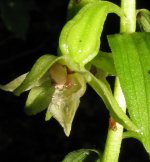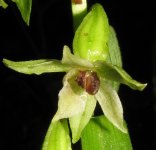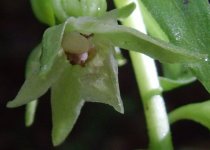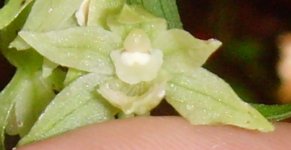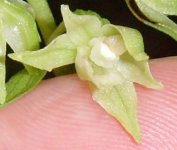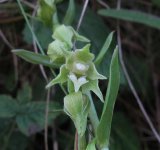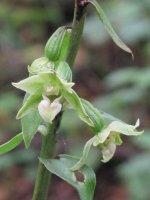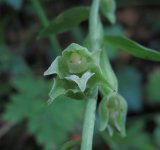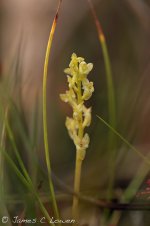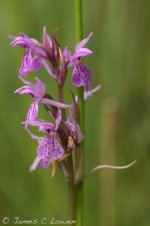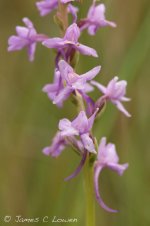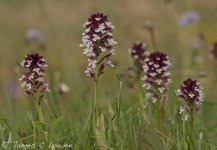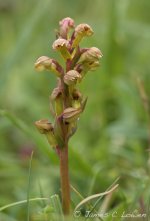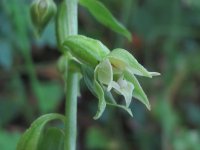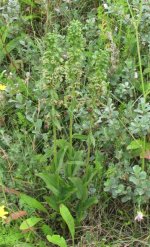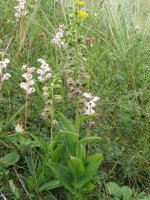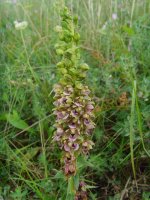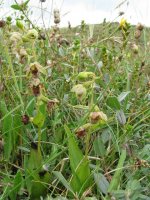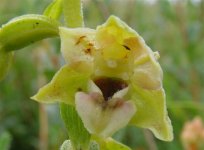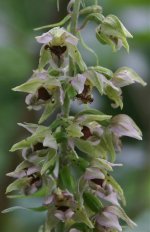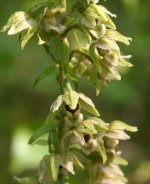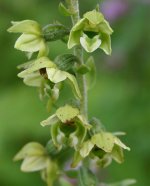Hampshire helleborine hunt
Last sunday to Winnall Moors to see green flowered helleborine. About a dozen plants still in tight bud. Then down to another site near the Test Way, not a sign. The river test looks like it's flooded here and taken the plants with it. A pity, there were a few nice little plants there right beside the river. Rownhams services next, broad leaf helleborine about half in flower now. Many plants in this not fantastically attractive site and obviously a popular place for dog relief! Be careful! To a site in Funtley next which I had not been to in a while to see if I could remember where the violet helleborines were. I could not believe that I found them so quickly, about 10 spikes in all, still in tight bud. According to my notes these and the green flowered were in good flower this time four years ago. It will be more than a week till a flower shows, but some warm weather this week should advance them.
Last sunday to Winnall Moors to see green flowered helleborine. About a dozen plants still in tight bud. Then down to another site near the Test Way, not a sign. The river test looks like it's flooded here and taken the plants with it. A pity, there were a few nice little plants there right beside the river. Rownhams services next, broad leaf helleborine about half in flower now. Many plants in this not fantastically attractive site and obviously a popular place for dog relief! Be careful! To a site in Funtley next which I had not been to in a while to see if I could remember where the violet helleborines were. I could not believe that I found them so quickly, about 10 spikes in all, still in tight bud. According to my notes these and the green flowered were in good flower this time four years ago. It will be more than a week till a flower shows, but some warm weather this week should advance them.




